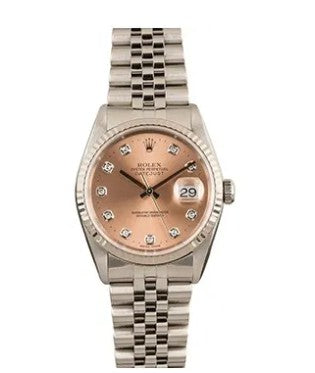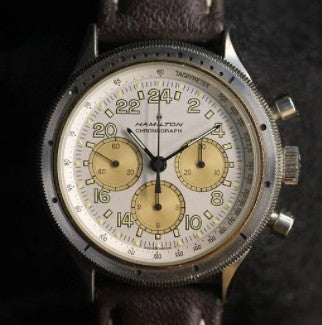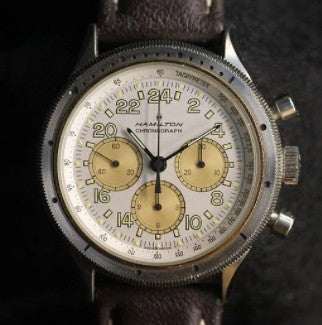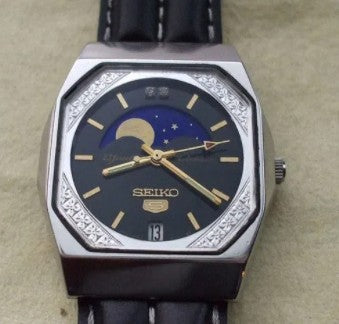Watch complications are those features that tell more than time. Equipped mainly in mechanical watches, these features, such as Alarm, Repeater, Calendar, Perpetual Calendar, Chronograph, Moonphase(lunar), etc. have come to be known as watch complication in horology. Originally, watch designs took to much simpler movements that just told hours, minutes and seconds. As we advanced in technology, watchmakers kept pushing the boundaries of innovation to include multiple complications in one timepiece.
Right from being able to set multiple alarms, monitoring oxygen levels underwater, measuring heartbeats of a patient, or just withstanding the most extreme conditions, various complications help perform various functions. Designed with the utmost attention to detail, these complications get harder to assemble with the number. For, a higher number of complications call for a greater degree of dexterity, craftsmanship, and ingenuity to design the components together.
Moreover, certain watches, known as tool watches, designed in such a way ensures maximum functionality. While tool watches do not have a clear definition, it represents an umbrella term for watches that have more than just a simple timekeeping movement. Watch complications enable watchmakers to envision designing tool watches with high accuracy and precision. For this purpose, many tool watches often come in different shapes and sizes. This allows the watchmakers to design and assemble different complications without compromising on the basic function of reading time.
If you are interested in these, check out our recommended collection of rectangular, square, and tool watches that feature some of the watch complications discussed below.
Types Of Watch Complications
Based on the functionality, there are broadly three main types of complications – Timing Complications that include different chronographs, Astronomical Complications that include different types of calendars and Moonphase, and Striking Complications that include alarm and repeater. Based on these broad classifications, in this section, we take a deep dive to understand each complication better.
Date

The most basic, yet the most important complication found in watches – the date display. For many, the presence of date displace makes all the difference while selecting a watch. Given the advancement in design and innovation, there are four main types of date complications available now. Although, with thousands of watchmakers in the market, new styles and techniques keep emerging. It is worth remembering that these are the most common types of date complications.
First came the simple date window. Sometimes also called the aperture, the date window merely reflects the date and by rotating the crown of the watch, the date can be easily changed.
Second, came the big date with an enlarged window for the display of the dates. Many watches have two date boxes next to each other, showcasing 0-3 on the right box and 0-9 on the left box.
Third, came the pointer date. By taking the space on the outer peripheral of the dial, the additional seconds hand points to the date. Also known as the ‘bankers watch’, this design eventually grew out of style. Although, some brands from the bygone era continue to design the watches with pointer dates.
Finally, watchmakers introduced a subsidiary dial which took the form of a second dial within the main dial to display the dates.
Day-Date

Slightly innovating from the date complication, watchmakers introduced the day-date complication to showcase the day of the week. The crown helps set the day and date. Typically, moving the crown in one direction sets the date, while moving the crown in the opposite, sets the day. The components of the day and date complications sit on two discs beneath the face of the watch where it automatically changes to the next day-date at might night every day.
Commonly, the date and day find its place next to each other in small boxes on the face fo the dial. However, with new designs, the day box often finds its place near 12 o’clock or 6 o’clock hand as well. These watches require manual adjustment of date where the month does not end on 31st.
Calendar
Upgrading from the date and date complication, the calendar complication found its way into the market. By adding the month to the dial, the watches showcase date, day, and month, in addition to timekeeping. Such complications have multiple display styles and designs based on brand preference. Also known as the triple calendar or complete calendar, this type of complication is perfect for you if you need to keep track of the month. The calendar complications derive into two varieties – annual and perpetual calendar (explained below).
Perpetual Calendar

Probably one of the most complicated complications in watchmaking is the perpetual calendar. This feature is unique and not easily found in low range watches. As the name suggests, this calendar complication truly stands the test of time. Due to its high-end designing and functionality, watches with the perpetual calendar mainly found in luxury watches, given its cost. Known for high accuracy of date, day, and month, the main feature of a perpetual calendar is that it automatically takes into account the leap year while changing to the next year.
On the other hand, the annual calendar complication does not take into account the leap year. Rather, the timepiece requires manual winding during leap years, failing which the month of February runs till the 31st.
Repeater
Another marvel of watchmaking enterprise, the repeater works with the help of a side lever on the watch-case. Popular during the 18th and 19th centuries in pocket watches, the repeater complication found its way into wristwatches must towards the 20th and 21st centuries. There are two varieties of the repeater complication that include minute repeater and quarter repeater.
The repeater enables the timepiece to produce a series of chimes in order to indicate the time. The minute repeater spells out the hours, quarters and minutes through a series of chimes. On the other hand, the quarter repeater chimes only for hours and quarters. A low chime denotes the hour, two chimes (high followed by low) denotes the quarter and high chimes denote the minute. These features particularly stuck with the visually impaired to tell the time. Engineered by the masterminds of the watchmaking industry, the repeater requires complex designing and assembling.
Alarm
Pretty much as the name suggests, alarm features in a watch are quite useful in extreme conditions when you cannot rely on your smartphones. This complication allows you to set a particular time, at which the timepiece will ring to notify you.
Unlike most other complications, even automatic and quartz watches can have this complication built-in them. The design to include an alarm reflects the watchmaker’s ability to create complex timepieces.
The components for the alarm complications find its place below the dial linked to a notched cam. Upon reaching the said time set for the alarm to ring, the cam enables the mainspring to ring, thereby indicating the time. Once the alarm rings, the alarm usually requires a reset to ring again.
Chronograph

Chronograph, in simple terms, means a stopwatch or a timer. The chronograph complication is designed to avoid any interference with the normal functioning of the watch. Timepieces equipped with chronographs typically have two or three buttons on the side of the watch case, that work as start and stop buttons to record time. Based on its functionalities, there are three main types of chronographs available today.
Monopoussoir, or one-button chronograph, as the name suggests, this comes with just one button pusher to start, stop and reset the time. Unlike modern chronographs, this particular type of complication cannot record interrupted time spans.
Next came the Retour-En-Vol, or the Flyback chronograph. Originally designed for pilots and race car drives to ensure accurate split-second readings, the Flyback chronograph comes equipped with two buttons. While the first button records start and stop time, pressing the second button counter resets and starts again from zero, enabling split-second recordings.
Then came the Rattrapante, or the split-seconds chronograph. This comes equipped with three buttons and two seconds handle. The added complications enable users to record two multiple events simultaneously.
Moonphase

Originally designed for sailors to keep track of the moon phase to determine the tides, the Moonphase complication in wristwatches does just that even today.
Although aesthetically appealing, the Moonphase complication has no real purpose for the modern urban lifestyle. The feature simply tells one whether its new moon, half-moon, full moon or no moon on that given day. Many brands double up the role of the Moonphase to equip a perpetual calendar within it.
Currently, the Moonphase is just a symbol to remember that reading time comes from the movement of celestial bodies.
Tourbillon

Invented to provide the high accuracy of timekeeping by eliminating errors caused by gravity and watch positions, the Tourbillon complication in watches reflects a feature of high-quality, durability, and longevity. While many watch enthusiasts may argue that the Tourbillon is not a true complication in a horological sense as it does not have a particular tangible function. Yet, the fact remains that the main idea of a Tourbillon is to ensure high-accuracy and prevent any changes to timekeeping influence by gravity.
Originally invented for pocket watches, in today’s world, the Tourbillon are prized more for their aesthetics and those that appreciate complex watch mechanisms. They are challenging to make which also makes tourbillon watches very expensive.
You may interested in:
British Watch Brands | Watches Made & Designed in the United Kingdom
Norwegian Watch Brands
Gucci Watch Brand Review
Best Entry-Level Rolex Watches (Buying Your First Rolex Watch)
10 Square Watches For Men


